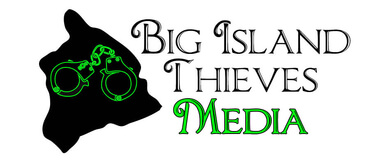Today, the State’s first wetland restoration project on Kaua‘i, the Kawai‘ele Waterbird Sanctuary is about to expand. You can’t canoe, cross-country, these days, but the addition of 100 acres of wetland will provide additional habitat for native Hawaiian birds and as Jason Vercelli of the DLNR Division of Forestry and Wildlife (DOFAW) put it, “If you can protect, restore, and re-create wetland areas, you’ll end up with a big sponge.”
Why is that important? On this 24TH annual World Wetlands Day, scientists and wetlands managers are calling attention to the wide-array of ecological services and help to humanity these shallow, species-rich, environments provide.
Helen Raine of Pacific Birds said, “One of the things they can do is to help purify our water. During major rain events like we see in Hawai‘i, a wetland can trap and allow pollutants and toxins to settle before they reach the ocean. In the same way they can help us control sediment and store flood water.” She says if we protect and look after our wetlands, they can provide us with a lot of services that people are going to need as the climate warms. “Wetlands are also home to some of our endangered Hawaiian waterbirds, like the Koloa Maoli (Koloa duck). Building flood resilience for people through natural infrastructure like wetlands will also help those birds”.
Wildlife biologist Vercelli has worked to help restore the Kawai’ele Waterbird Sanctuary for more than a decade. The area was set aside in the mid-90s. He notes, the four native waterbirds that now inhabit the shallow ponds: the Hawaiian stilt, Hawaiian coot, the Hawaiian gallinule and the koloa duck.
Kawai’ele is not a natural wetland, but it was created after sand dunes were excavated to allow water to fill in. Whether created by human hands or not, clearly wetlands are not just for the birds. They provide recreational and educational opportunities. In addition to the interpretive kiosks currently in place, it is hoped the wetland’s expansion will eventually see a resource center with laboratory activities for keiki.
Across Kaua‘i, along the southern shoreline near Poipu, another wetland restoration is happening on private land.
At the Makauwahi Cave Reserve, wetland areas are planted with taro and banana as well as native plants and visitors can often spot koloa ducks resting along the moist banks. Koloa maoli, Hawaiian ducks were once abundant across the state. As the wetlands declined in Kauai, so did bird populations.
This is one reason the Hawai‘i Climate Change Mitigation and Adaptation Commission recently adopted a fictionalized koloa maoli (Koloa Iki) as a tool to increase learning about sea climate change resilience and adaptation.
Anu Hittle, the commission’s coordinator said, “The Koloa Maoli, living in wetland habitats that absorb carbon, provide resilience to storm surges, and act as an indicator of saltwater intrusion, can help show us, in a fun way, where we need to take action to make Hawai‘i climate ready.”
You can learn more about the restoration of wetlands on public and private lands and see Koloa Ike in the video below.



